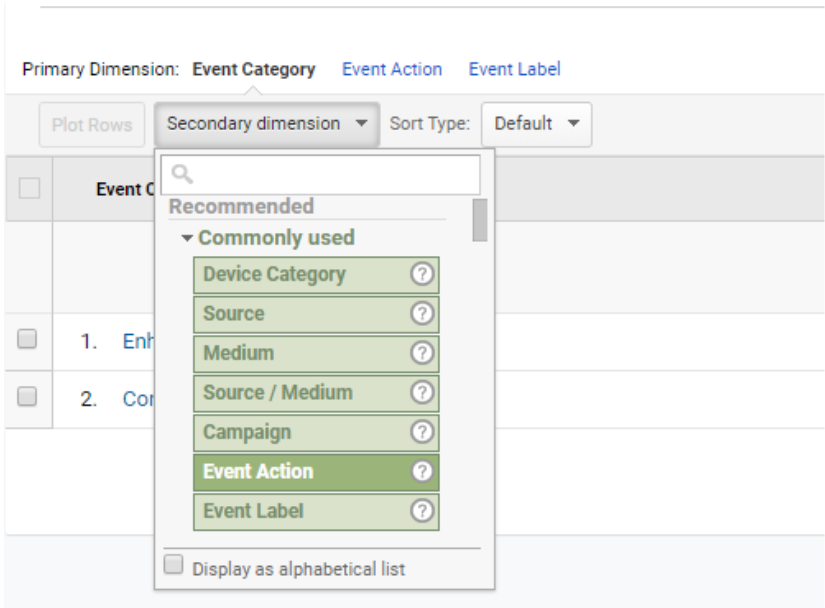Understanding Google Analytics: Using Secondary Dimension for Deeper Analysis
Understanding Google Analytics: Using Secondary Dimension for Deeper Analysis
Blog Article
Opening the Power of Additional Dimension Analytics for Enhanced Data Insights and Decision-Making
In the world of data analytics, key measurements frequently take the spotlight, however truth depth of insights exists within the world of second dimensions. These extra data points use a nuanced perspective that can brighten connections and patterns not conveniently evident in the beginning glance. By taking advantage of the power of additional measurement analytics, organizations can introduce covert trends, discover relationships, and extract a lot more significant final thoughts from their data. The capacity for improved decision-making via the use of these second dimensions is large, promising a much deeper understanding of complicated data sets and leading the way for even more informed strategic choices.
Importance of Additional Dimensions
Exploring the importance of secondary measurements in analytics introduces the covert layers of information understandings vital for notified decision-making in various domains. Second measurements give a deeper understanding of key data by offering additional context and point of views. By integrating second measurements right into analytics, organizations can draw out much more nuanced and comprehensive understandings from their datasets.
One key importance of additional dimensions is their capability to section and categorize main data, permitting a more thorough evaluation of particular subsets within a dataset. This segmentation allows businesses to determine patterns, trends, and outliers that may not appear when looking at the data in its entirety. Second dimensions help in uncovering connections and dependencies in between various variables, leading to even more precise projecting and anticipating modeling - secondary dimension.
Furthermore, second dimensions play an essential function in boosting information visualization and reporting. By adding additional measurements to visualizations, such as charts or charts, experts can develop extra insightful and insightful representations of data, facilitating much better communication of findings to stakeholders. Overall, the integration of additional dimensions in analytics contributes in opening the complete capacity of data and driving evidence-based decision-making.
Secret Advantages of Utilizing Additional Measurements
Utilizing secondary measurements in analytics supplies organizations a strategic benefit by enhancing the deepness and granularity of information understandings. By studying data making use of secondary measurements such as time, location, device type, or individual demographics, organizations can uncover patterns, patterns, and correlations that may or else continue to be hidden.
In addition, the utilization of secondary measurements improves the context in which key information is translated. It provides a much more extensive sight of the relationships between various variables, enabling companies to make educated choices based on a more all natural understanding of their data. In addition, secondary measurements assist in the recognition of outliers, abnormalities, and areas for optimization, inevitably leading to a lot more efficient approaches and boosted end results. By leveraging secondary dimensions in analytics, organizations can harness the complete capacity of their information to drive better decision-making and attain their service purposes.
Advanced Information Analysis Methods
A deep dive into advanced information evaluation Get More Info methods reveals sophisticated methods for drawing out beneficial understandings from complex datasets. One such strategy is artificial intelligence, where formulas are used to determine patterns within information, predict outcomes, and make data-driven decisions. This technique enables the automation of analytical design building, making it possible for the processing of huge quantities of information at a faster rate than traditional techniques.
One more innovative strategy is anticipating analytics, which utilizes analytical algorithms and device understanding methods to anticipate future results based on historic data. By evaluating patterns and fads, services can expect customer habits, market patterns, and potential dangers, empowering them to make aggressive decisions.
Furthermore, text mining and belief analysis are important strategies for extracting understandings from unstructured information sources such as social media sites remarks, customer testimonials, and survey feedbacks. By assessing message information, companies can recognize customer viewpoints, determine emerging trends, and improve their services or items based upon feedback.
Enhancing Decision-Making Through Additional Measurements

Enhancing decision-making via secondary measurements makes it possible for organizations to make even internet more educated and targeted strategic options. By segmenting consumer data based on second dimensions like acquiring background or involvement degrees, firms can customize their advertising strategies to particular audience segments, leading to enhanced conversion rates and customer contentment. Additional dimensions can assist recognize relationships and partnerships between various variables, allowing companies to make data-driven decisions that drive growth and success.
Implementing Secondary Measurement Analytics
When incorporating secondary dimensions in analytics, companies can open much deeper understandings that drive critical decision-making and enhance total efficiency. Implementing second dimension analytics needs a structured approach to make sure effective use of this powerful tool. The very first step is to identify the crucial metrics and measurements that align with the organization's strategic goals. This entails comprehending the specific concerns the company looks for to address and the information factors needed to address them.

Additionally, organizations must utilize progressed analytics tools and modern technologies to improve the process of including secondary measurements. These devices can automate information processing, evaluation, and visualization, allowing organizations to concentrate on analyzing understandings instead of manual information adjustment.
Verdict
In verdict, additional measurement analytics play an essential function in boosting information insights and decision-making procedures. By utilizing innovative information evaluation techniques and implementing additional measurements successfully, companies can unlock the power of their data to drive calculated service choices.
In the world of information analytics, key dimensions typically take the spotlight, but the real deepness of insights lies within the realm of second dimensions.Using secondary measurements in analytics offers companies a tactical benefit by increasing the depth and granularity of data insights. By leveraging secondary measurements in analytics, companies can harness the full possibility of their information to drive much better decision-making and accomplish their business purposes.
Applying data recognition processes and normal audits can help keep data top quality and dependability.
By utilizing sophisticated data evaluation methods and carrying out second dimensions effectively, organizations can unlock the power of their data to drive tactical organization choices.
Report this page